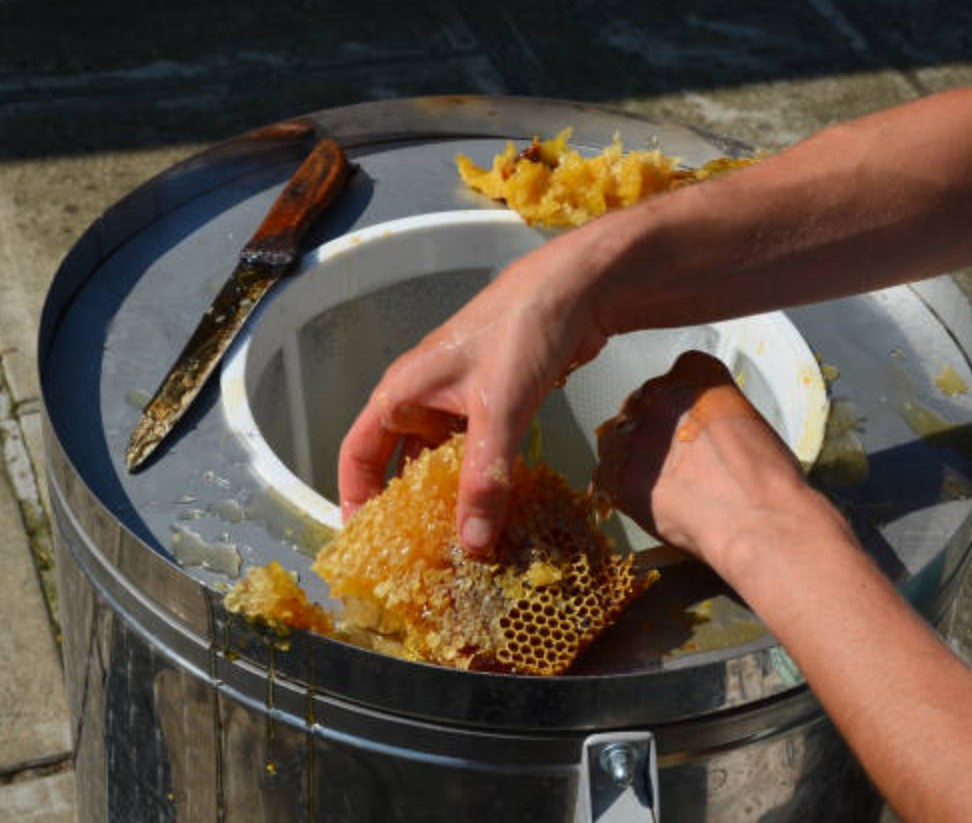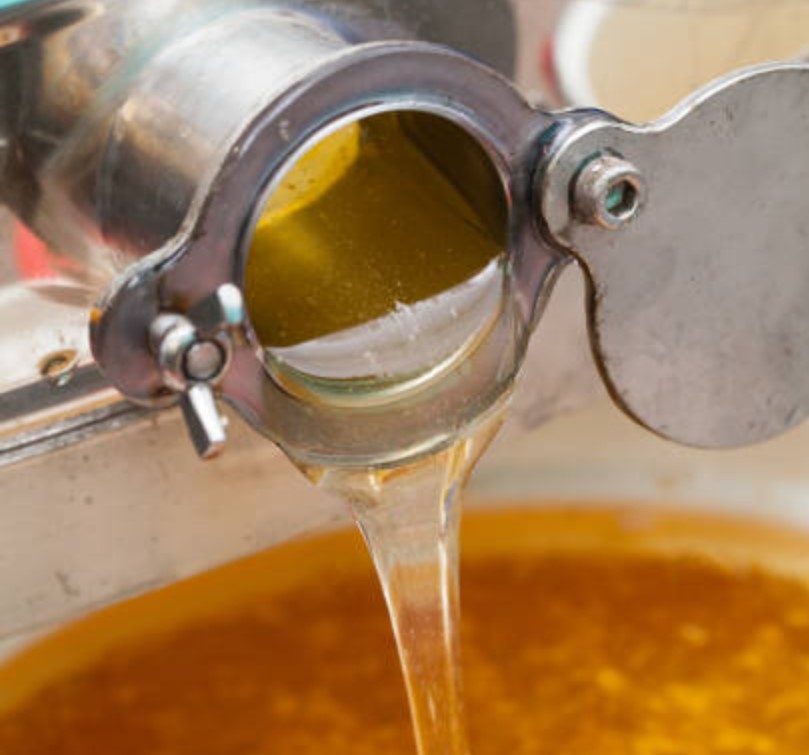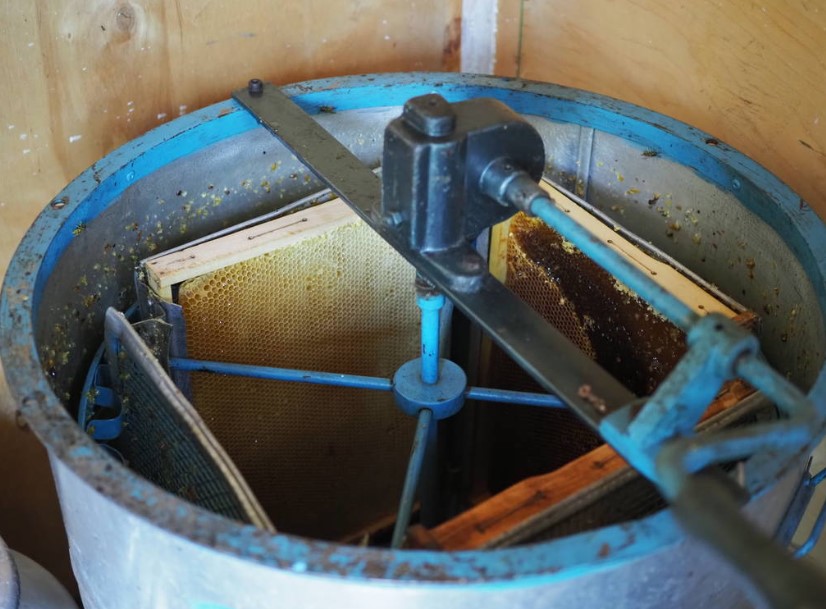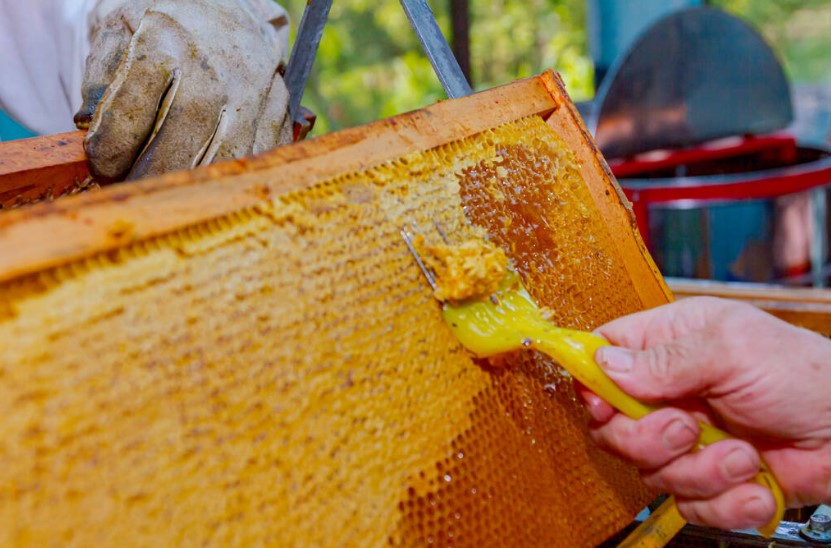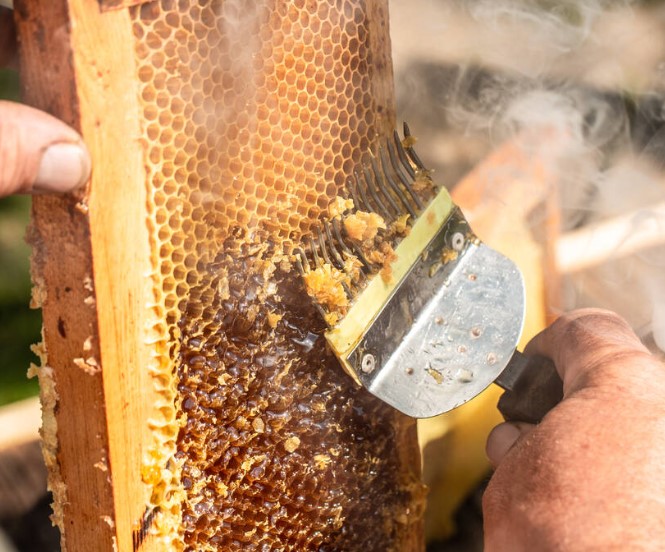Honey Extractors
Join the community of smart beekeepers using our state-of-the-art honey extractors; don’t miss out, get yours now and take the first step towards easier and more effective honey extraction!
Essential Features to Consider When Choosing a Honey Extractor
Table of Contents
- 1 Honey Extractors
- 1.1 Essential Features to Consider When Choosing a Honey Extractor
- 1.2 Key Features About Honey Extractors
- 1.3 Types of Honey Extractors
- 1.4 Types of Honey Extractors
- 1.5 Honey Extraction Process
- 1.6 Maintenance and Storage
- 1.7 Advantages of Using a Honey Extractor
- 1.8 Challenges and Considerations
- 1.9 Environmental Impact
- 1.10 Innovations and Market Trends
- 1.11 Conclusion
- 1.12 HONEY EXTRACTORS – FAQs
- 1.12.1 What is a honey extractor?
- 1.12.2 How does a honey extractor work?
- 1.12.3 What are the types of honey extractors?
- 1.12.4 What is the difference between radial and tangential extractors?
- 1.12.5 How do I choose the right size honey extractor?
- 1.12.6 How do I clean a honey extractor?
- 1.12.7 Can I rent a honey extractor?
- 1.12.8 How long does the honey extraction process take?
- 1.12.9 Is an electric extractor better than a manual one?
- 1.12.10 How often should I service my honey extractor?
- 1.12.11 What is the best way to store a honey extractor when not in use?
- 1.12.12 Can I extract different types of honey with the same extractor?
- 1.12.13 How do I know when to stop the extraction process?
- 1.12.14 Do honey extractors damage the beeswax comb?
- 1.12.15 What safety precautions should I take when using a honey extractor?
- 1.12.16 Can I build my own honey extractor?
- 1.12.17 What are the environmental benefits of using a honey extractor?
- 1.12.18 How do I balance a honey extractor?
- 1.12.19 What materials are honey extractors typically made from?
- 1.12.20 Can honey extractors handle different frame sizes?
- 1.12.21 How do I unclog a honey gate?
- 1.12.22 Can I extract honey without an extractor?
- 1.12.23 How important is the speed control in an electric honey extractor?
- 1.12.24 What is the lifespan of a honey extractor?
- 1.12.25 How does honey extraction impact honey quality?
Honey extractors are a crucial tool in the beekeeping industry, designed to efficiently harvest honey from the combs while preserving the structure of the wax cells. These devices utilize the principle of centrifugal force to extract honey. The frames containing honeycombs are placed inside the extractor’s drum, and as the drum spins, the honey is flung out of the comb cells, collecting at the bottom of the drum from where it can be drained off. This method is significantly advantageous as it allows beekeepers to extract honey without destroying the combs, which bees can reuse, saving the energy that bees would otherwise expend in rebuilding the wax cells.
There are primarily two types of honey extractors: manual and electric. Manual extractors, operated by a hand crank, are often preferred by hobbyists or small-scale beekeepers due to their simplicity and lower cost. Electric extractors, on the other hand, are powered by an electric motor and are ideal for larger operations, as they can handle a greater number of frames and significantly reduce the labor and time involved in the extraction process. Within these categories, extractors are further classified as radial or tangential, based on how the frames are positioned during the extraction. Radial extractors hold frames radially with the top bar facing outwards, enabling simultaneous extraction from both sides of the comb, whereas tangential extractors extract honey from one side of the comb at a time, requiring the frames to be flipped to extract from the other side. The choice between these types depends on factors like the scale of beekeeping, budget constraints, and personal preferences. Moreover, key features like the material of construction, capacity, ease of cleaning, and durability play a significant role in determining the efficiency and longevity of the extractor.
Using a honey extractor not only aids in efficient honey production but also contributes to sustainable beekeeping practices. By preserving the honeycomb structure, it reduces the workload of bees in rebuilding the comb, thereby allowing them to focus more on honey production. As beekeeping continues to evolve, advancements in honey extractor technology are enhancing these benefits, offering beekeepers more sophisticated, efficient, and environmentally friendly options.
Key Features About Honey Extractors
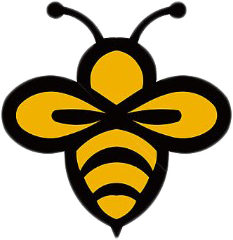
Type of Extractor: Distinguishing between manual and electric models based on operation mode.

Capacity: Ranging from small 2-frame units suitable for hobbyists to larger models capable of handling 20 or more frames for commercial operations.

Material Construction: Commonly constructed from stainless steel or food-grade plastic for durability and safe honey handling.

Frame Compatibility: Ability to accommodate various frame sizes, including deep, medium, or shallow frames.

Extraction Method: Differentiating between radial and tangential extractors, each with unique frame placement and extraction efficiency.

Speed Control: Especially in electric models, allowing for the adjustment of spinning speed to prevent comb damage.

Ease of Cleaning: Featuring removable parts and smooth surfaces for hassle-free maintenance.

Durability and Build Quality: Assessing the robustness of the construction to ensure long-term use.

Honey Gate or Tap: A valve or gate mechanism for controlled honey drainage.

Safety Features: Including secure lids, stable bases, and safety cut-offs in electric models to ensure user safety.

Transparent Lids: Allowing beekeepers to monitor the extraction process without opening the extractor.

Noise Level: Particularly in electric models, the operational noise can be a consideration.

Portability: Considering the weight and design for ease of transportation, especially for beekeepers with multiple apiary sites.

Energy Efficiency: Relevant for electric models, impacting operational costs.

Environmental Impact: Assessing the sustainability of materials and manufacturing processes.

Accessibility of Parts: Availability of spare parts for maintenance and repair.

Warranty and Support: Manufacturer’s warranty and customer support services for post-purchase assistance.

User-Friendly Design: Ensuring the extractor is easy to operate, even for beginners.

Cost-Effectiveness: Balancing features with the overall cost to find a model that offers value for money.
Types of Honey Extractors
Manual Extractors
Operated by hand using a crank. Suited for small-scale beekeepers.
Electric Extractors
Powered by electricity, efficient for commercial use.
Radial Extractors
Frames are placed with top bars outwards, allowing simultaneous extraction from both sides.
Tangential Extractors
Frames lie against the drum’s side, requiring manual flipping to extract from both sides.
Types of Honey Extractors
Capacity
Ranges from 2-frame models for hobbyists to 20+ frames for commercial operations.
Material
Commonly made of stainless steel or food-grade plastic.
Frame Size Compatibility
Essential to match the extractor with the frame sizes used in one’s beehives.
Speed Control (Electric Models
Allows for gentle acceleration, reducing comb damage risk.
Ease of Cleaning
Removable parts and smooth surfaces facilitate cleaning.
Durability
Quality of construction material and design affects longevity.
Unlock the full potential of your beekeeping with our advanced honey extractors.
Order now and experience a revolution in honey harvesting!
Honey Extraction Process

Uncapping
Removal of wax caps from honeycomb using an uncapping knife or fork.

Loading the Extractor
Frames are placed into the extractor basket.

Extraction
Centrifugal force is used to pull honey out of the comb, which collects at the bottom.

Draining
Honey is drained through a tap or honey gate.
Maintenance and Storage

Regular cleaning with warm water and mild detergent.

Annual servicing, especially for electric models, is recommended.

Storage in a dry, dust-free environment.
Advantages of Using a Honey Extractor
Efficient extraction process, preserving the integrity of the combs.
Reduces labor and time involved in honey harvesting.
Increases the yield of honey per comb.
Allows for sustainable beekeeping practices.
Challenges and Considerations
Initial cost, especially for electric and large-capacity models.
Requires storage space.
Learning curve for optimal use and maintenance.
Environmental Impact
Honey extractors promote sustainable beekeeping by preserving honeycombs, reducing the need for bees to reconstruct combs and thus conserving their energy.
Innovations and Market Trends
Development of more energy-efficient models.
Integration of automated systems in extraction processes.
Growing preference for eco-friendly materials in manufacturing.
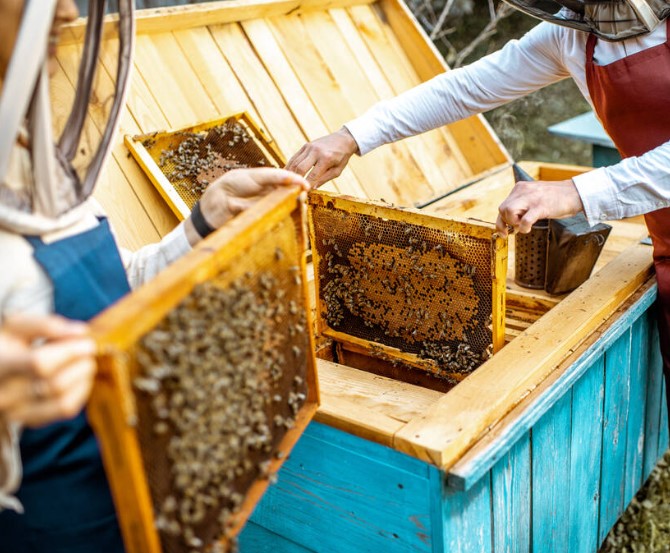
Conclusion
Honey extractors play a pivotal role in modern beekeeping. They provide an efficient means of extracting honey while preserving the combs for reuse, contributing to sustainable beekeeping practices. The choice between manual and electric models depends on the scale of beekeeping and individual requirements. Proper maintenance and storage of the extractor are crucial for its longevity and performance. As beekeeping practices evolve, innovations in honey extraction technology are likely to continue, focusing on efficiency, sustainability, and ease of use.
HONEY EXTRACTORS – FAQs
What is a honey extractor?
A honey extractor is a mechanical device used by beekeepers to extract honey from honeycombs without damaging them, typically using centrifugal force.
How does a honey extractor work?
A honey extractor works by spinning honeycomb frames in a drum, using centrifugal force to pull honey out of the comb cells, allowing it to run down and be collected at the bottom of the extractor.
What are the types of honey extractors?
The main types of honey extractors are manual (hand-cranked) and electric, with variations including radial and tangential designs.
What is the difference between radial and tangential extractors?
Radial extractors hold frames with the top bar facing outward, extracting from both sides simultaneously, while tangential extractors hold frames against the drum’s sides, requiring manual flipping to extract from both sides.
How do I choose the right size honey extractor?
The right size depends on your hive count and honey production; small-scale beekeepers usually opt for 2-4 frame extractors, while commercial operations may require larger capacity extractors.
How do I clean a honey extractor?
Clean a honey extractor by rinsing with warm water to remove honey residue, followed by a thorough cleaning with a mild detergent, and then rinse again with hot water to sterilize.
Can I rent a honey extractor?
Yes, many beekeeping supply stores and beekeeper associations offer honey extractors for rent.
How long does the honey extraction process take?
The extraction process can vary but generally takes a few hours, depending on the extractor’s size and the number of frames to be processed.
Is an electric extractor better than a manual one?
Electric extractors are faster and require less manual labor than manual extractors, making them better for larger operations, but they are also more expensive.
How often should I service my honey extractor?
Service your extractor at least once a year, ideally before the harvesting season, to ensure it’s in good working condition.
What is the best way to store a honey extractor when not in use?
Store in a clean, dry place, preferably covered to protect from dust and debris.
Can I extract different types of honey with the same extractor?
Yes, you can extract different types of honey with the same extractor, but it should be cleaned thoroughly between batches to avoid cross-contamination.
How do I know when to stop the extraction process?
Stop the extraction when no more honey is coming out of the frames, which is typically visible through the clear lid or side of the extractor.
Do honey extractors damage the beeswax comb?
Properly used, honey extractors do not significantly damage the comb, which can be returned to the hive for reuse by the bees.
What safety precautions should I take when using a honey extractor?
Always ensure the extractor is stable, use protective gear, and keep hands and loose clothing away from moving parts during operation.
Can I build my own honey extractor?
Yes, it’s possible to build your own honey extractor, especially manual ones, using DIY guides and appropriate materials.
What are the environmental benefits of using a honey extractor?
Honey extractors allow for the sustainable harvesting of honey without destroying the comb, leading to less resource consumption as bees don’t have to rebuild the comb.
How do I balance a honey extractor?
Balance a honey extractor by evenly distributing frames inside it and ensuring it’s on a level surface.
What materials are honey extractors typically made from?
Most are made from stainless steel or food-grade plastic, chosen for durability and ease of cleaning.
Can honey extractors handle different frame sizes?
Some extractors can handle different frame sizes, but it’s important to check compatibility before purchase or use.
How do I unclog a honey gate?
Unclog a honey gate by disassembling it and cleaning any residual honey or wax with warm water.
Can I extract honey without an extractor?
Yes, honey can be extracted without an extractor using methods like gravity draining or crushing and straining, but these are more labor-intensive and can damage the comb.
How important is the speed control in an electric honey extractor?
Speed control is important in electric extractors as it allows for gentle acceleration and deceleration, reducing the risk of comb damage.
What is the lifespan of a honey extractor?
With proper maintenance, a honey extractor can last many years, even decades, depending on its quality and usage.
How does honey extraction impact honey quality?
Proper extraction preserves the honey’s natural qualities, while harsh or improper extraction can lead to overheating or contamination, affecting flavor and quality.

